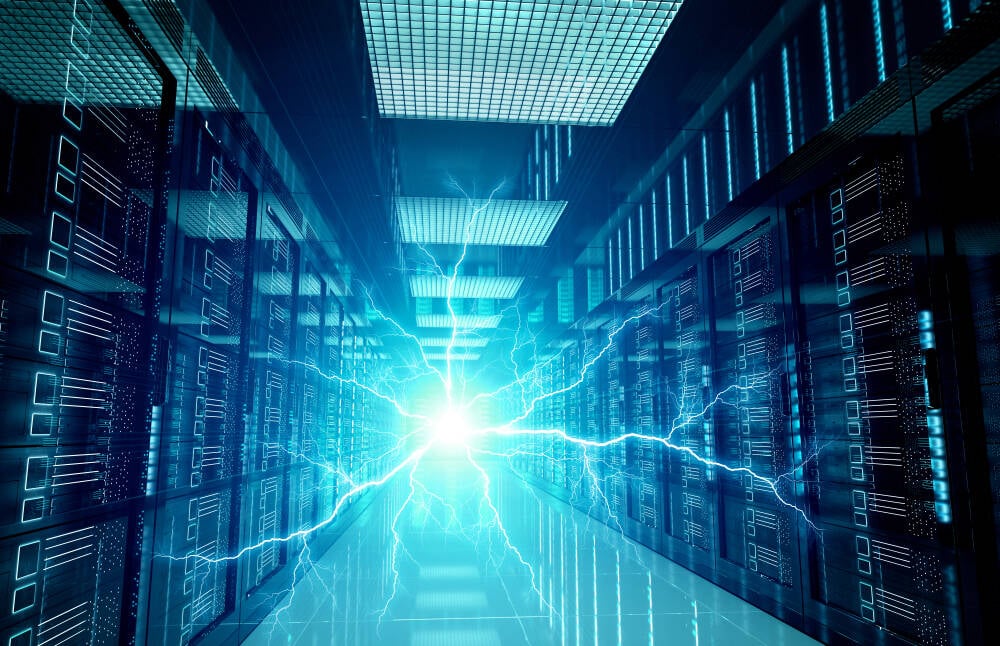Analysis: The global datacenter electricity consumption is expected to double by 2030, surpassing Japan’s total energy consumption. AI is the main driver.
The International Energy Agency recommends policies in the energy sector to multiple governments. The Paris-based agency also relies on artificial intelligence to ease the energy crunch that the tech is fueling.
This week, the IEA published a study that examined the intersection between AI and energy consumption. The IEA believes that datacenters are responsible for more than 20% of the growth in electricity demand in advanced economies within the next five-year period, with AI being the main driver.
According to the agency, the US, which accounted 45 percent of global consumption in datacenters by 2024, is expected to grow this share significantly by 2030. The US datacenters will consume more electricity by 2030 than the entire energy-intensive manufacturing industry of the country, including aluminium and steel, cement and chemicals.
According to Fatih Bilal, IEA executive director, datacenters in the United States are on track to account for nearly half of the growth
“In the United States, datacenters are on course to account for almost half of the growth in electricity demand” in electricity demand over the next five-year period. “With the rise of AI, the energy sector is at the forefront of one of the most important technological revolutions of our time.”
The report highlights the need for increased energy production (ideally renewable) to meet demand. This is something we’ve discussed previously and has been well established in recent years. But with a slightly different perspective: optimism that we can use AI as a tool to optimize systems that will offset a large amount of emissions, if used correctly. Birol said.
According to the report, AI is already used in the energy industry for several purposes, including improving production, transmission and consumption, and helping the oil-and-gas industry optimize exploration and manufacturing. The report also calls for a wider adoption of AI in order to detect faults on power grids, optimize heating and cooling systems and boost industrial efficiency. The report stated that policy and regulatory changes will be required to unlock these gains. The IEA has dismissed concerns about AI making it harder to combat climate change by increasing energy consumption and burning fossil fuels in order to keep machines running. Even though datacenters are one of the fastest-growing sources of emissions, they still account for less than 1.5 percent of the total energy sector emissions by 2035, according to the worst-case scenario of the agency. The IEA does not expect AI to solve the climate change conundrum .
“The widespread adoption of existing AI applications could lead to emissions reductions that are far larger than emissions from datacenters,” The IEA said “but also far smaller than what is needed to address climate change.”
According to the IEA, the emissions reductions that could be enabled by widespread use of AI solutions by 2035 could be equivalent of about five percent of the global energy-related emission. It’s a start, but not enough to make a real difference in climate change. Don’t forget the energy used and emissions from chip production!
The AI sword that hangs over the energy sector is a double-edged one. While AI adoption is driving energy demand, the tech can also be marketed as a tool for reducing emissions. Chip production must be taken into account in calculations.
A report by Greenpeace, published this week, shows that global electricity consumption for AI chip manufacturing increased by 350 percent between 2023-2024 and could increase as much as 170 times by 2030, compared to levels in 2023. The group stated that this would be enough to make chip manufacturing – which is mainly concentrated in Taiwan, South Korea and Japan – consume more electricity than Ireland today.
- Datacenters hit a record low due to power shortages
- Eric Schmidt says build more AI datacenters as we won’t ‘hit climate targets anyway’
- Datacenters energy demand in Virginia, the ‘capital of world’ for bitbarn, nearly doubled by 2024’s second half
- Great, UK is building a lot of AI datacenters. How will we power all of that?
Making matters worse, most East Asian chipmakers are using fossil fuels to meet the rising energy demand. The report cited South Korea’s approval of a 1 Gigawatt liquefied gas (LNG), plant for SK hynix, and plans to build a 3 GW LNG capacity for Samsung. In Taiwan, the government uses the increased demand for power from the semiconductor and artificial intelligence sectors to justify expanding LNG and grid infrastructure.
While Nvidia and AMD, fabless hardware giants, are reaping billions of dollars from the AI boom they are ignoring the climate impact of their East Asia supply chains
“While fabless hardware companies like Nvidia and AMD are reaping billions from the AI boom, they are neglecting the climate impact of their supply chains in East Asia,” said Greenpeace East Asia Supply Chain Project Lead Katrin Wu of the report. “[This is] demand that could, and should, be met by renewable energy sources.”
According to the IEA report, while AI hardware manufacturing is energy-intensive, it “accounts for less energy than the operation phase” over a product’s lifetime. The current surge in energy consumption for chip production is not encouraging, and the demand for AI hardware is growing.
But, hey, just like COVID-19 if emissions aren’t reported, they may not have happened. According to reports, the US Environmental Protection Agency is taking a familiar route: cutting back on transparency in greenhouse gas reporting.
ProPublica reports that the EPA has been drafting a new rule to reduce the number of industries required to report greenhouse gas emissions from 41 to one.
This could make any data about how AI is helping to fight climate change practically worthless, as no one will be tracking emissions. Great news for US chipmakers– after all, it is hard to blame someone for contributing to climate changes when no one is collecting receipts. (r)
